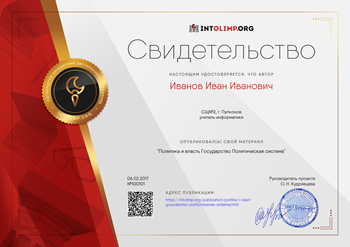Методическая разработка урока
Карпец Анастасия Алексеевна
Учитель английского языка
МБОУ «СОШ№2»
Английский язык
10 класс
“Enjoy English” Биболетова М.З., 2014
Уровень обучения – базовый
Тема: Поведение на улицах
Общее количество часов – 2
Место урока в системе уроков по теме это 1-й урок по теме. На первом уроке обучающиеся познакомятся с поведение на дорогах.
Цель урока:
- формирование грамматических навыков говорения (структуры Complex Object), развитие речевых умений по изучаемой теме, совершенствование навыков аудирования и чтения.
- развитие способности осуществлять продуктивные речевые действия, развитие коммуникабельности и кругозора учащихся.
- формирование представления об образе жизни британцев, воспитание уважительного отношения к чужой культуре, традициям Британии, чувства сопричастности к чужой культуре и более глубокое осознание своей культуры.
Задачи урока
- Контроль степени усвоения лексико-грамматических единиц;
- Развитие навыков монологической речи, чтения и аудирования (восприятия речи на слух);
- Развитие практических навыков при составлении утвердительных и отрицательных предложений с использованием модального глагола can;
- Усвоение лексических единиц по теме: «Правила дорожного движения, дорожные знаки»;
Планируемы результаты: На примере текста формировать нравственность, любовь к Родине. Научить уважать традиции других народов. Отработка навыков чтения и мологической речи.
Техническое обеспечение урока: “Английский с удовольствие 10 класс, М. Биболетова и Е. Бабушис, “Титул”, 2014 г.; магнитофон; постеры “Do you know that…?” и “In your culture”; раздаточный материал (карточки с дополнительными заданиями по теме); материалы из Интернета: карта мира – плакат ЦМО (центра международного обмена); адреса для переписки со сверстниками из англоговорящих стран (на стенде “For the Lesson”)
Дополнительно методическое и дидактическое обеспечение урока учебник (учебное пособие):
рабочая тетрадь;
сборник заданий;
дополнительная литература (словари, справочники);
плакаты;
таблицы;
компьютер или проектор
ход урока
Ход урока
1.Организационный момент
Hello, children! Today at the lesson we are going to speak about the British. What are the British like? And we start describing…
2. Речевая разминка
Now, dear children, please answer my questions.
What day is it today?
What is the weather like today?
3. Фонетическая зарядка.
Could, would,
Should, couldn`t, shouldn`t wouldn`t.
Can`t, shan`t, are, aren`t.
Have, has, haven`t, hasn`t.
Won`t, don`t.
Did, didn`t, is, isn`t.
She sells seashells.
4. Введение в тему
Look at the blackboard. Let me introduce our guest. He is Mr. Sign (учитель знакомит учеников с новым словом “sign”). He is from London. Mr. Sign invites us to London Zoo. Do you want to visit zoo? What animals do you want to see? (Ответы учащихся) But Mr. Sign wants to tell us about some signs in the zoo.
5. Развитие навыков восприятия английской речи на слух.
Now we shall learn to listen and hear. You ‘ll listen to the text about the British queen. After listening you’ll answer my question: What is the queen Elizabeth fond of?
Незнакомые слова выписаны на доске:
Staff – штат служащих
Bishop – епископ
Ambassador – посол
Paper work – канцелярская работа
Judge - судья
The Queen Elizabeth II is one of the richest women in the world. Being a queen is a really busy job. Elizabeth II gets up early and begins the day by looking through newspapers. Then she reads letters from the public (she gets more than 1000 each week) and tells the staff how they should be answered. The Queen has daily meetings with her private Secretary who helps her to do paper work, and lots of meetings with ambassadors, new judges and bishops. In the afternoons she opens new hospitals, bridges, factories. Once a week the Queen has a meeting with the Prime Minister and they discuss government business and important things that are happening in the country. In the evening she reads the report of the day from the Parliament. She must agree to every new law. In her spare time the Queen enjoys horse racing, fishing and walking in the countryside. She also enjoys photography and likes taking photos on her travels.
(После прослушивания дети отвечают на вопрос: Чем увлекается королева Англии в свободное время?)
Учащимся предлагается закончить следующие мысли:
Every day the Queen reads…
The Queen has daily meetings with…
Once a week a Queen has a meeting with…
6. Отработка грамматических навыков
Какие характеристики британцев известны во всем мире? (дети составляют предложения о британцах с использованием Complex Object)
| The English The Scots The Welsh The Irish The British |
are | thought said known believed considered supposed |
to be | conservative well-mannered great tea drinkers practical and careful country people emotional but reticent charming |
|
|
|
|
|
|
7. Развитие навыков чтения (чтение с охватом общего содержания)
It was England that was destined to become the tastemaker in tea fashion for several centuries, and the guardian of tea traditions. It was here that tea became not only a part of life, but also of culture in the widest sense. It influenced traditions, art, habits and possibly even the national character.
How did tea make its way into English society? The first records of tea being bought in London shops start appearing at the beginning of the 1650s. Right from the very beginning a number of tea drinking traditions and English habits were formed. Tea was used for medical purposes, then became a social drink, a noble alternative to alcohol. England gained not only the port of Bombey, but also the habit of drinking tea every day. The ladies quickly established some well- defined traditions: tea should be poured by the lady of the house, there should be special tongs for serving sugar, the tart taste of tea should be softened with milk. They paid great attention to the tea service and started buying cups, sugar bowls, milk jugs, tea-ports, saucers, side plates and special table cloths and napkins, which soon become an important part in the life of all English aristocratic houses. By 1750 tea had become the most popular beverage for all types and classes of people – even though a pound of tea cost a skilled worker perhaps a third of his weekly wage. Tea was drunk in various situations: not only in its traditional form after dinner as a digestive, for breakfast and during receptions, but also in breaks from work, when being treated at a spa, on the road while travelling, before going to bed and upon waking up. In short, everywhere. Tea become associated with the wider Britain, namely the British Empire. And then the British began to export their language, political system, law, games (cricket, football) and spread their tea.
Has tea affected the national character? Many people like to think that it has. The British become quieter, gentler, less aggressive. There are theories that tea transformed England, as it had China and Japan before that. Some researchers believe that tea brings tranquility, a love of order and family values. The English who ruled half the world with an iron fist in the nineteenth century hardly fit in to this ideal image. Maybe, in actual fact, it is that nations which have certain national tendencies choose tea and not tea that forms those tendencies?
После прочтения текста учащимся предлагается объяснить, как они понимают слова: “Tea influenced the British character.”
Answer my questions
What did tea used for?
Was tea an expensive or cheap beverage?
What situations was tea drunk in?
What did tea become associated with?
How did tea transformed England?
Find the synonyms for the following words in the text: calm ( спокойный), drink ( напиток), influence (влиять), set(устанавливать). Ответы: quiet, beverage, affect, establish.
8. Итоги и домашнее задание
Thank you for your work. I liked your ideas and active participation.
At home, уou must compile a story on "The British are the greatest animal lovers in the world"







